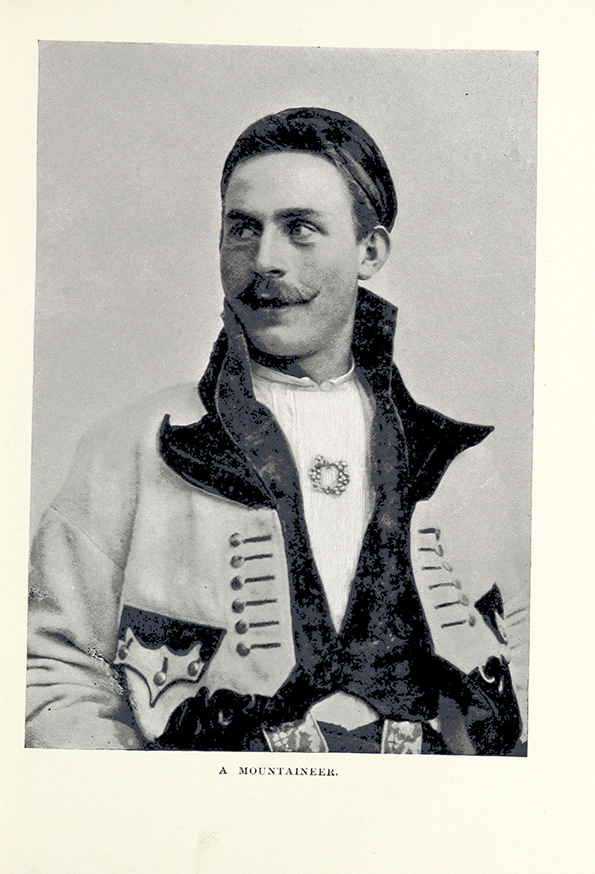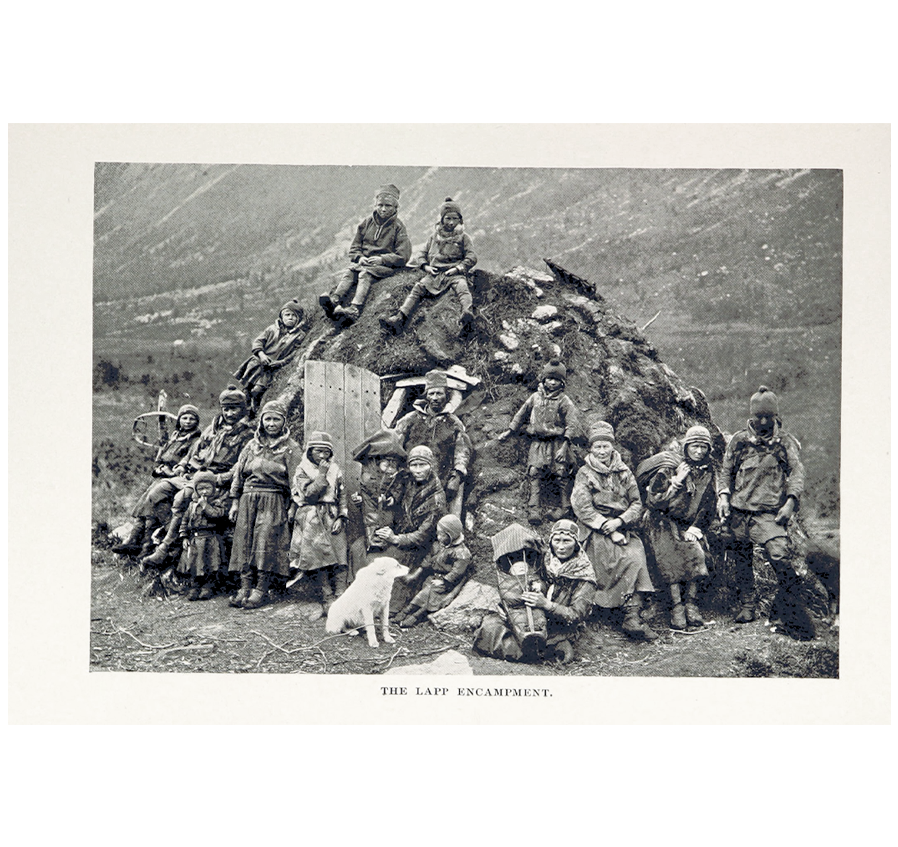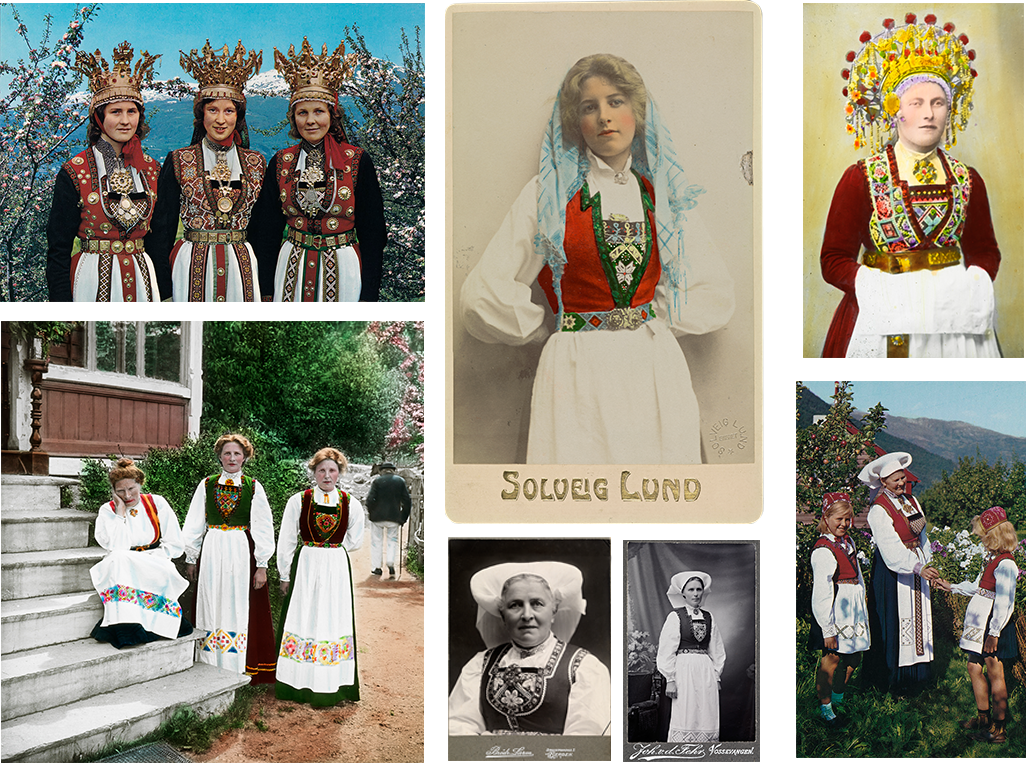Anonymous
A MOUNTAINEER, A YEOMAN
b. unknown – d. unknown
(presumed) Norway

‘A grand-thunderstorm was all that broke the monotony of the sail across the great North Sea; but it was one well worth seeing and remembering, for its dark, pillar-like formation sharp against the uninterrupted horizon, filled with zigzag lightning, riveted all eyes for over half an hour, while on each side of this blackness was the lurid light of the setting sun making the contrast of colour all the more vivid. We were all early on deck the next morning as the great steamer entered the Hardanger Fjord, and realised that we were at last in Norway.’
This vivid description was penned by Thomas Sedgwick Steele in his book A Voyage To Viking-Land as he arrived in Norway aboard the Augusta Victoria steamer. Steele was not only a writer, but painter, photographer and explorer and published three books over the course of his life – two on his native Maine where he explored the state with both camera and canoe, and a third describing his journey around Norway in 1896. It is full of eloquent and evocative depictions of sheer fȷords, snow-topped mountains, the never-setting-sun and the day-to-day lives of nineteenth century Norwegians. The titles given to the illustrations that accompany Steele’s writings preface the book and give the reader a glimpse into some of the more memorable and enigmatic aspects of his trip (‘And Huge Glaciers Reached Down The Fjord’; ‘There Were Mountains Piled Upon Mountains’ and ‘Nowhere Else In Europe Does The Snow-clad Peak Rise Directly Out Of The Sea’ to name a few); the vast majority of these scenes were photographed by Steele himself.






Nationalistic dress became particularly important to Norwegians as the country tried — and failed, initially — to claim independence from Sweden in the early 1800s. Many of Steele’s photographs show Norwegians and the Lapp people in practical woollen or hide outfits, better to protect themselves from the far-northern climate and it’s unlikely therefore that this model is wearing a mountaineer’s outfit as it’s too lavish and ornamented. It could be that he is photographed, as if he were on his way to church — or maybe on his wedding day, considering the broach, detailing and overall quality of the garment.


INFORMATION SOURCES
& FURTHER READING
– A short biography of the author’s life is featured in Men of Mark in Connecticut alongside other distinguished figures from the state.
– Information on the bunad available here and here.
IMAGE SOURCES
– Image 1 ‘A Mountaineer’, p.59 of A Voyage to Viking-land
– Image 2 Mountainous Fjords from p.161
– Image 3 Souvenir details from p.88 and 103
– Image 4 Laplanders in boat from p.99
– Image 5 Villagers from Lappland from p.105
– Image 6, men wearing bunads, clockwise from top left:
– 6A Studio portrait of man from Bergen
– 6B Hand-coloured photograph of man holding a tankard
– 6C Studio shot of three men
– 6D Hand-coloured photograph of man in red jacket
– 6E Man in traditional dress, outdoors
– Image 7, women wearing bunads, clockwise from top left:
– 7A Photograph of Norwegian brides
– 7B Studio portrait of woman in traditional dress
– 7C Hand-coloured photograph of a Norwegian bride
– 7D Woman and two girls from Hardanger outdoors
– 7E Woman from Hardanger in studio portrait
– 7F Kone fra Hardanger (Wife from Hardanger)
– 7G Women in national dress outside the Sundal Guest House
– Image 8 ‘A Norwegian Yeoman’ from p.163 of A Voyage to Viking-land
– Image 9 The midnight sun near Bellsund, Norway
– Image 2 Mountainous Fjords from p.161
– Image 3 Souvenir details from p.88 and 103
– Image 4 Laplanders in boat from p.99
– Image 5 Villagers from Lappland from p.105
– Image 6, men wearing bunads, clockwise from top left:
– 6A Studio portrait of man from Bergen
– 6B Hand-coloured photograph of man holding a tankard
– 6C Studio shot of three men
– 6D Hand-coloured photograph of man in red jacket
– 6E Man in traditional dress, outdoors
– Image 7, women wearing bunads, clockwise from top left:
– 7A Photograph of Norwegian brides
– 7B Studio portrait of woman in traditional dress
– 7C Hand-coloured photograph of a Norwegian bride
– 7D Woman and two girls from Hardanger outdoors
– 7E Woman from Hardanger in studio portrait
– 7F Kone fra Hardanger (Wife from Hardanger)
– 7G Women in national dress outside the Sundal Guest House
– Image 8 ‘A Norwegian Yeoman’ from p.163 of A Voyage to Viking-land
– Image 9 The midnight sun near Bellsund, Norway

